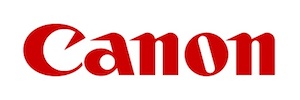Cary Sherburne: Hi, I’m Cary Sherburne, Senior Editor of WhatTheyThink.com and we’re back with Marco Boer, who is with IT Strategies and he’s been telling us some very interesting information about a recent PRIMIR digital print study. So you know, we can actually refer people back to the other videos so they can hear that if they missed it the first time, but maybe we can just carry on and talk about some of the other surprising things that you found as you did this research.
Marco Boer: All right, so the big news was that the number of pages that are printed analog and are shifting to digital are actually a very small percentage. The other interesting finding is that if you look at the value of pages. The digitally pages that are produced are far more valuable than the analog pages. So in other words, if you are printing, particularly a variable digital page, you can command up to 20 times what you can get for the equivalent offset page. So, while that wasn’t the focus of the study, the point remains is that the people who by print recognize it and are willing to pay for digital production print to pages. So even though they may never tip and be completely you know, replacing analog, the value is high.
Cary Sherburne: Well, that’s great. And of course, there is a lot of commodity print being done on digital, but if you do add those special characteristics like variable data or QR codes or whatever it is, it commands a higher price.
Marco Boer: Now the other interesting breakthroughs that sort of trickled out through the study is that the digital printing technology is changing. And things are improving. Noteworthy, one of the big issues, of course tied to changing from analog to digital is the cost of print. And that can only change with throughput, productivity.
Cary Sherburne: Right.
Marco Boer: And so, electro photography, which is a very important technology and will coexist for years to come, we believe, as far as the study, will not be able to extent its productivity beyond a certain range because you’re limited to the print width economically and the linear feed speed. Inkjet, on the other hand, can go very wide and it can go very fast in a linear feed, so inkjet technology is probably the technology that will come closest to meeting the productivity and heads the cost levels, but even that won’t ever be quite at the same levels as offset frankly because it shouldn’t.
The manufacturing process of making the inks is very difficult or inkjet inks, the economies of scale are very different, we’re making maybe 50 to 100 million liters of inkjet ink a year, including consumer, where it’s billions of liters of offset ink, so you’ve got that issue.
And then last, and probably most important to business model is such that in the digital print business, the money that’s made off the consumables is then reinvested in R&D and innovation. And a typical R&D budget will run seven to 10 percent of sales for digital production printer vendor, on the analog side, you’re lucky to get even close to one percent.
And so, you know, that money has to come from somewhere. So it’s either from the supplies or they’ve got to start a lot more for the hardware. It’s a very interesting finding.
Cary Sherburne: That’s interesting. So if you had to pull out one major conclusion that would sort of wrap up the study, what would be the biggest major conclusion just sort of net out that you learned.
Marco Boer: I think one of the things that we learned is that the incremental value that digital print offers is really what drives the growth, so the value of minimizing the waste of book inventory, the value of being able to personalize something. It’s not a strict one-to-one placement. It’s really, in many ways, complementary rather than a real replacement.
Cary Sherburne: and would you say then that that requires a different selling strategy on the part of the printer? You have to – they have to change the mental model about the way that they think about selling.
Marco Boer: So that wasn’t part of the study.
Cary Sherburne: No.
Marco Boer: But absolutely, you are right. It takes a different business model because you’re selling things in smaller quantities typically at a much higher value. And it’s not a race to the bottom to offer the cheapest product possible; you’re really now encompassing a much broader kind of sale.
Cary Sherburne: That’s great. Well, we’ll be looking forward to that being released over the next couple of months before the end of 2010.
Marco Boer: Yes, most certainly.
Cary Sherburne: I hear you’re the roadblock. These are – I’ve done several of these reports, and I know that it’s a lot of work and so I really applaud you for getting this done and it’s a terrific service to the industry on the part of you and the task force and Premiere. So thank you very much for doing that.
Marco Boer: It’s an absolute pleasure.
Cary Sherburne: And we will look forward to actually seeing that report come out. Thank you.
Marco Boer: You too, thank you.

 Official camera partner of WhatTheyThink and the drupa daily.
Official camera partner of WhatTheyThink and the drupa daily. 












Discussion
By Erik Nikkanen on Dec 30, 2010
So glad to hear that the digital printing tipping point is still not close.
Now if only the offset community would start to rethink their process, that tipping point can be pushed still further off.